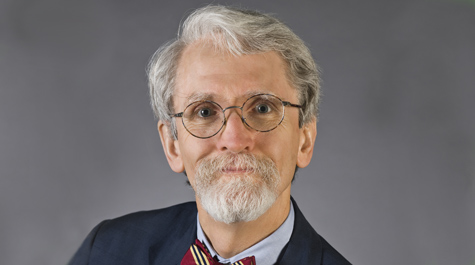CW's Ed Chappell '72 honored with 2013 Prentis Award
A William & Mary alumnus who’s volunteered hundreds of hours to his alma mater supporting the renovation of three colonial buildings and helping on various preservation issues has been named the 2013 recipient of the College’s Prentis Award.
Ed Chappell, who graduated in 1972 with a bachelor’s degree in history, is the Shirley and Richard Roberts Director of Architectural and Archaeological Research at the Colonial Williamsburg Foundation. His responsibilities are to lead architectural research, archaeological excavation, and analysis and preservation of Colonial Williamsburg’s buildings and archaeological resources. President Taylor Reveley will present the award to Chappell during a reception at the Wren Building on Tuesday, May 14.
“It’s grand to have the Prentis Award go to Ed Chappell this year. His contributions to the preservation of historic Williamsburg have been extraordinary. While his good deeds for William & Mary have been but a small part of his work, they have played a large role in the nurture of the College’s three iconic buildings – the Wren, the Brafferton and the President’s House. Ed has been vital to our understanding of the Ancient Campus and to its preservation,” said Reveley.
The annual Prentis Award is given to people whose civic involvement benefits the community and the College. The award is named in honor of the Williamsburg family whose 18th-century shop on Duke of Gloucester Street was a hub of colonial life. Members of the Prentis family have been friends of the College and the community since 1720, when the store was first established in Williamsburg. Marc B. Sharp, president of Greensprings Plantation, Inc., part of the Bush Companies, was the 2012 recipient.
Chappell is well known around campus with staff from William & Mary’s Historic Campus and the William & Mary Center for Archaeological Research. He’s been involved with major renovations at the Wren Building from 1999 to 2000 and the rehabilitation and recording of the President’s House in 2006. Currently, he’s working on the Brafferton restoration, examining the interior walls to determine their 18th-century finishes.
“The partnership between William & Mary and Colonial Williamsburg has been an essential one since 1927,” said Chappell. “Thoughtful preservation of the ancient campus’ historic qualities is vital to both institutions, and to the town. I am deeply honored to be this year’s Prentis Award recipient, and to help preserve the great history of Williamsburg.”
According to Louise Kale, director of William & Mary’s Historic Campus, whenever there’s a problem related to College preservation, Chappell makes it his problem.
“He does this not just because he’s a good neighbor. He does it because he cares deeply about the College and the architecture of William & Mary,” she said.
“He’s utilized these opportunities to learn more about our colonial buildings than we knew prior to these interventions,” Kale continued. “Not only has he guided us on the preservation of the buildings, but he’s added to the knowledge that we have about the buildings.”
For example, Kale recalled that when working on the renovation of the President’s House, Chappell discovered and documented evidence for two small spaces on both main floors. This affected everyone’s understanding of how the house was arranged in the 18th century.
“We had no physical evidence of this before,” she said.
Over the past 30 years, Chappell has touched virtually every architectural restoration project in Williamsburg and has led preservation efforts for many of the approximately 560 restored and reconstructed buildings in the area. Among the projects Chappell helped lead are a 128-acre expansion of the Historic Area in 2002 and the careful preservation design for Merchants Square and the resort district.
Chappell has contributed his expertise to the local and greater Williamsburg area having served on numerous boards throughout the years. He was a member of the City of Williamsburg Architectural Review Board, and Building Code Board of Appeals. He has also served as a member of the Archaeological Advisory Committee of the APVA (Association for the Preservation of Virginia Antiquities).
Chappell has also been instrumental in the College’s early assessment of the 18th-century structure believed to have housed the Bray School, an institution dedicated to the education of free and enslaved black children. From 2004 to 2008, he was one of the professionals who developed the preservation guidelines for the Sunken Garden precinct at the College, a Getty Foundation-funded project.
Since then, Chappell and Kale have been working on a book about the architecture and history of the development of the Sunken Garden.















